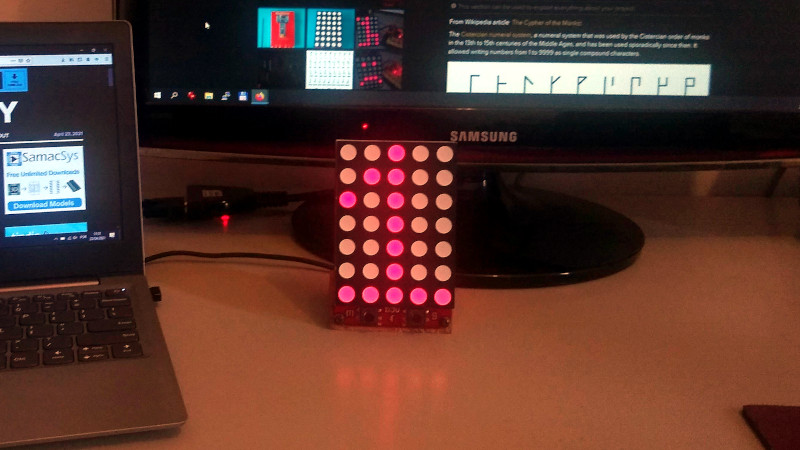It’s rare for the fields of the engineer and the mediaevalist to coincide, but there’s a clock project bringing the two fields together. The Cistercian monastic order used an intriguing number system from the 13th century onwards that could represent any four-digit number as a series of radicals expressed in the four corners of a single composite symbol, and it’s this number system that’s used by the clock to render the full range of 24 hour time on a large 5×7 LED matrix mounted on a wooden base.
Behind the scenes is an Arduino and a DS3231 real-time clock, and all the code can be found in a handy GitHub repository. There’s even a PCB from everyone’s favourite vendor of purple PCBs, The result is certainly an interesting clock that makes the break from the usual binary and Nixie timepieces with some style. It also provides an introduction to this fascinating but obscure numerical system, in the event that any of us might have missed the one other such clock that has made it to these pages.
















Is this a prank clock for colour blind people?
Clearly. Just like the Commodore 64 was, with its light blue on blue default colors. I guess it could have been worse, like blue over green.
Halt! Mandatory “Chant Cistercien” to immerse yourself whilst reading the article:
https://www.youtube.com/watch?v=BWQtArnPwGg
In a strange case of Baader-Meinhof phenomenon, last week I saw this on arduboy website: https://community.arduboy.com/t/cistercian-number-counter/9778 an easy way to learn to read cistercian numbers interactively.
I think this takes the cake, when it comes to information density. 10,000 unambiguous symbols in a 5×7 matrix? That’s impressive.
And most of those 35 LEDs are not even functional. Only 24 are used, and only 16 are actually required.
On the other hand, with an even simpler (binary) scheme, you can unambiguously specify every second in a year with just 25 LEDs. Though, admittedly this scheme does impose a modest increase on your wetware’s computational burden to convert, say, 10 am local time to 25 bit binary.
Or, heck, just go the full 32 bit unix time. Some folks natively think in that already.
I wonder if the Cistercian monks argued over big-endian vs. little-endian…
I tell time the cappuccino way, 7 am, 1 cappuccion, 7:05, 2 cappuccino, 7:10, 3 cappuccino and after that who cares!
If I correctly understood, the clock in th picture shows time 11:30 ?
It bothers me immensely that the pattern for ‘6’ is inconsistent with the rest of the scheme. It seems very un-monk-like.
6 should be to 5 as 4 is to 3.
I’m very sorry if you can’t unsee that now.